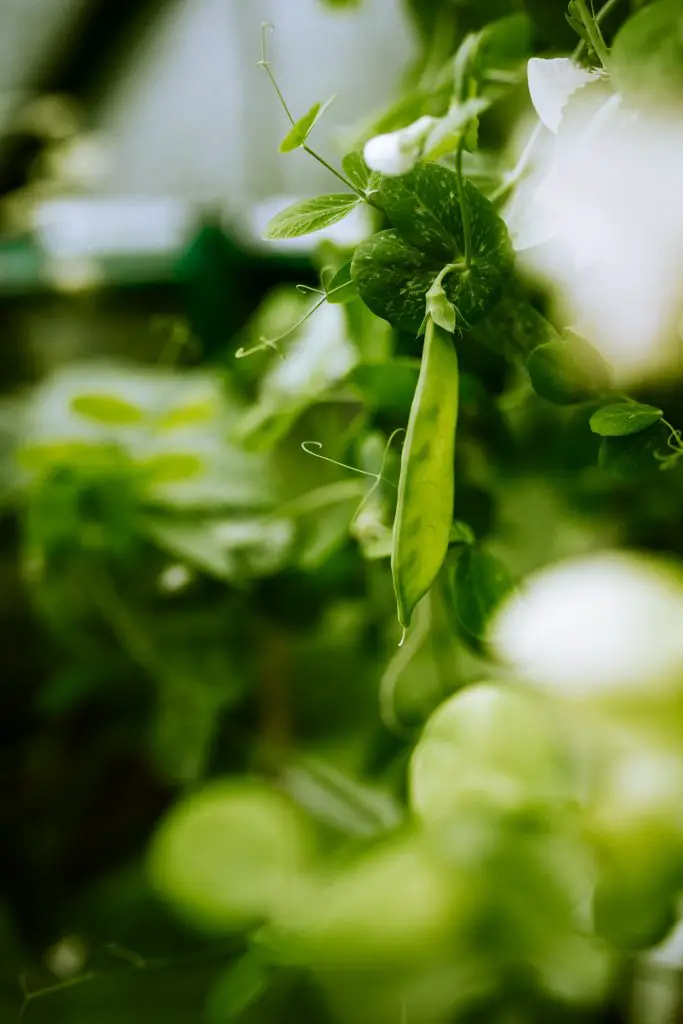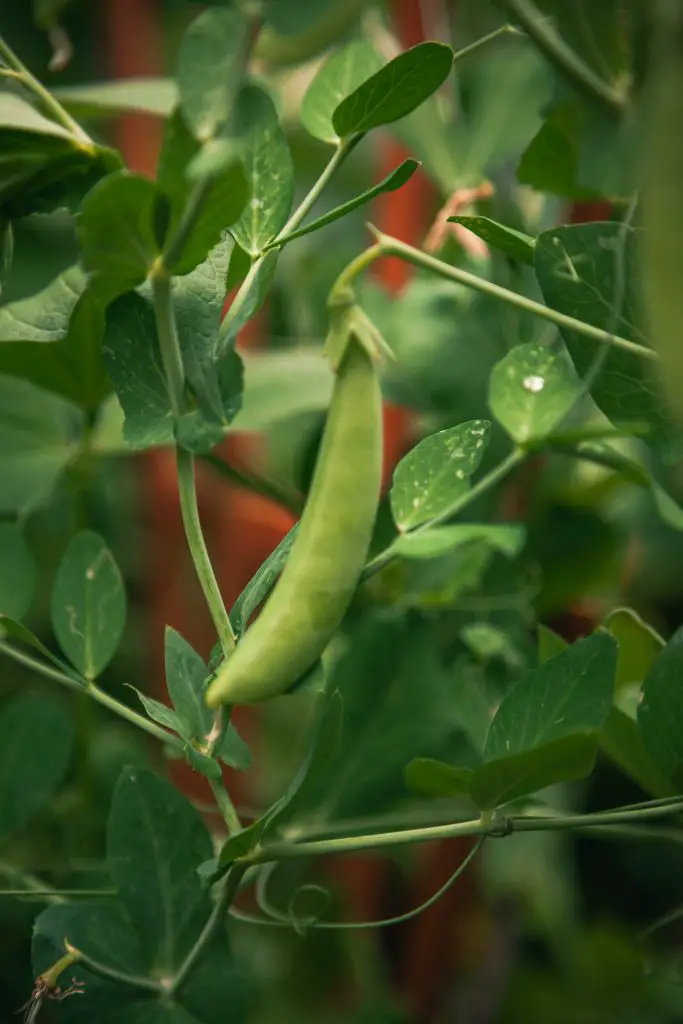How Many Peas In A Pod? Peas are a popular vegetable that is generally underrated for their quality of flavor because it is most commonly eaten frozen when much of its sugar has converted to starch. However, if you eat the peas directly from the pod you will discover what you’re missing out on. However, for many people that want to grow their own peas, the obvious question is how many peas do you get in a pod?
Generally, shelling peas will produce between 6 and 7 peas per pod though this can vary depending upon the specific variety. The RHS 2017 Shilling peas trial that tested 32 different varieties found that the range of peas per pod varied from as little as 5 to a maximum of 9 on average.
However, to get a decent pea crop you will need to put in a lot of plants in as the RHS trial produced between 4 and 10lbs (2 to 5kg) of peas from two 12 ft rows of plants. However, pea plants are extremely easy to grow and will germinate quickly requiring only a small amount of maintenance if you do not use a trellis.
The traditional approach is to use a trellis and allow the plants to grow up the trellis using their tendrils which do cling to the structure. However, I have personally found that this approach is inefficient because it is common for mature plants to fall off the trellis due to the weight of the plant which develops over time. This forces the gardener to secure the plants to the trellis using string. This is most commonly done by tying a length of string horizontally across a number of plants rather than tying them individually as that is simply too much work.

How To Grow Peas With Minimal Effort
However, an alternative approach that is much simpler and low lower maintenance is to use stakes and string only. In this method, stakes are driven approximately 2 to 3 ft apart along a row with the seeds being planted into the ground in a farrow between these two stakes.
The timing of the planting is best done in either late winter to early spring or in late summer or early autumn depending upon your climate. This is because the plants do not do well in heat and will quickly die when the temperature gets too hot. Sowing at these times will ensure that the plants avoid the heat and maximizes the crop.
In terms of the location that is selected, peas should be planted in a full sun location to maximize the plants’ potential to flower. It is also advisable to ensure that the soil is rich moist and free draining.
The seeds should be planted approximately half an inch apart at a depth of half an inch to an inch. They will generally germinate relatively quickly in most conditions and within 2 to 3 weeks will be approximately 4 inches tall.
Once they reached this stage the first level of support should be put in place. To do this tie twine or string to the stakes at a height of approximately 4 inches and then run the string horizontally between the posts at that height ensuring that there is string on both sides of the post so that it holds the plant in an upright position.

In another two to three weeks when the plant has increased in height to approximately 8 to 10 inches a second layer should be applied at that height to ensure that the plant remains stable. This process should be repeated until the plant reaches its full height which in many cases is around 2 feet tall if it is a dwarf variety, however, there are other varieties that are taller than this.
During this period it is important to ensure that the soil remains moist by watering regularly and applying a thick layer of mulch. Once the plant begins to reach its full height it will start to produce white flowers initially which will be quickly followed by the formation of pods.
Harvesting Peas
The pea pods that appear from the flowers will initially be flat and then will progressively increase in thickness as the peas inside develop. The plants should be harvested once the pea pods rich a thickness of approximately the width of a pencil or a little larger.
When harvesting the pods it is highly recommended that you pick one or two and open them up to ensure that the peas are ready to eat. They can be eaten directly from the pod there and then and they will be particularly sweet.
As the plant will continue to flower until the weather either gets too hot or too cold depending upon the time of year it is important to visit the plants every few days and pick those pods that are ripe and ready to go. To maximize their flavor it is ideal to eat the peas shortly after they have been picked as they will be at their sweetest.
.

Alternatives To Growing Peas
While peas are particularly delicious to eat they are a bit of a pain because you need to shell them which means that they are a relatively time-consuming crop compared to other things. I have in the past grown them in my own garden however these days I grow snow peas rather than green peas because they are simply quicker and easier to eat and harvest.
I hope you found this article useful and had great success with your pea plants, if you have any comments or questions please leave them in the section below
Relevant Articles
What’s The Difference Between Sweet Peas And Green Peas? (What You Need To Know)
What Is The Best Fertilizer For Growing Peas?
How Many Peas Will One Plant Produce?
Can You Plant Peas From The Grocery Store?
